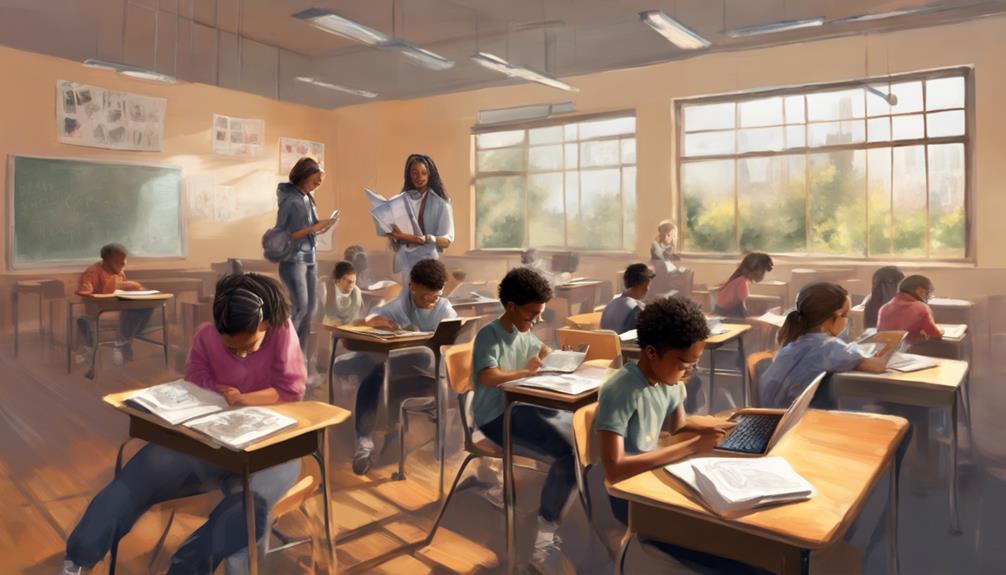The existence of different learning styles is a multifaceted phenomenon that stems from the intricate interplay of individual cognitive processes and environmental influences. Understanding the underlying reasons behind these variations can offer profound insights into how we perceive, process, and retain information. By unraveling the complexities of learning style diversity, we can gain a deeper appreciation for the nuances that shape our educational experiences and interactions. This exploration into the intricacies of learning styles opens a gateway to a broader understanding of human cognition and the ways in which we navigate the vast landscape of knowledge acquisition.
Key Takeaways
- Learning styles vary due to past experiences, interests, and cognitive processes.
- Tailored educational strategies are essential for accommodating individual preferences.
- Factors like personality traits influence learning styles and information retention.
- Acknowledging and addressing diverse learning styles are crucial for effective education.
Understanding Learning Style Differences

Understanding the nuances of learning style differences is crucial in developing tailored educational strategies that cater to individual preferences and cognitive processes. Individual preferences play a significant role in how individuals engage with and internalize information. These preferences are shaped by various factors such as past experiences, interests, and personality traits. Additionally, cognitive processes vary among learners, influencing how they perceive, organize, and remember information. This diversity in cognitive processing highlights the necessity for personalized teaching approaches that acknowledge and accommodate these differences.
Impact of Learning Styles on Education
The impact of learning styles on education is multifaceted, encompassing the diversification of teaching methods, the implementation of student engagement strategies, and the adoption of personalized learning approaches. By recognizing and catering to various learning preferences, educators can create a more dynamic and inclusive classroom environment that promotes active participation and knowledge retention. Through the adaptation of instructional techniques to align with individual learning styles, students can benefit from a tailored educational experience that enhances their overall academic success.
Teaching Methods Diversity
Teaching methods diversity plays a crucial role in optimizing educational outcomes by catering to the various learning styles present in a classroom setting. Differentiated instruction is essential to support visual, auditory, and kinesthetic learners effectively. By adapting teaching strategies based on the learning styles of students, educators can promote engagement and enhance comprehension. Varied instructional approaches not only accommodate the diverse preferences of students but also create a more inclusive learning environment. Implementing multiple modalities in teaching ensures that all students have the opportunity to learn in ways that resonate with them, leading to better retention and understanding of the material.
Student Engagement Strategies
Utilizing tailored student engagement strategies based on individual learning styles significantly influences educational outcomes and classroom dynamics. By recognizing and accommodating diverse learning preferences, educators can enhance student engagement and participation in educational activities. Matching teaching methods to students' preferred styles not only boosts their focus and motivation but also fosters a supportive and inclusive learning environment. When students are engaged in ways that align with their unique learning styles, they are more likely to retain knowledge and perform better academically. Adapting instruction to cater to various learning styles is crucial for promoting active involvement and interest in classroom activities. Ultimately, implementing student engagement strategies tailored to learning styles is key to improving overall educational experiences and outcomes.
Personalized Learning Approaches
Personalized learning approaches, tailored to individual learning styles, play a pivotal role in enhancing educational experiences and outcomes. Understanding diverse learning styles and implementing personalized strategies can significantly benefit students and educators alike. Here are three key ways in which personalized learning approaches impact education:
- Catering to Diverse Student Needs: By recognizing and accommodating various learning preferences, personalized learning approaches create a more inclusive and effective learning environment.
- Utilizing Multiple Modalities: Integrating a variety of teaching methods caters to different learning styles, ensuring that students receive information in ways that resonate best with them.
- Enhancing Engagement and Retention: Research indicates that adapting instruction to align with learning styles increases student engagement and knowledge retention, leading to improved overall learning outcomes.
Visual Learning Style Characteristics
Visual learners have a preference for processing information through visual aids such as images, graphs, and diagrams. This learning style facilitates better comprehension and retention of material when presented with visual stimuli like videos or infographics. Individuals with a visual learning style may struggle with purely auditory or text-based learning methods but excel in tasks requiring spatial reasoning and visual organization.
Visual Learning Benefits
The preference for processing information through visual aids, such as charts, graphs, and diagrams, characterizes individuals with a visual learning style. Visual learners benefit significantly from this style in various ways:
- Memory Retention: Visual learning enhances memory retention by associating information with images and colors, making it easier for visual learners to recall details during assessments and exams.
- Comprehension: Visual learners excel in tasks that require observation, visualization, and spatial reasoning, as they can better understand complex concepts when presented in a spatial format.
- Academic Performance: Utilizing visual learning strategies can lead to improved understanding, retention, and overall academic performance for visual learners, as they can leverage their strengths in processing visual information effectively.
Effective Visual Techniques
Building on the foundational benefits of visual learning in memory retention, comprehension, and academic performance, the discussion now shifts towards exploring effective visual techniques that align with the characteristics of the visual learning style. Visual learners benefit greatly from visual aids like charts, diagrams, and videos to enhance their understanding and retention of information. Incorporating color coding into study materials can significantly aid visual learners in processing complex information. Visual learning style characteristics emphasize spatial organization, patterns, and visual representations to facilitate concept grasping. Techniques such as mind mapping and creating visual summaries are particularly effective for visual learners, enabling them to better comprehend and remember information. Visual learners excel in tasks that involve visualizing, imagining, and creating mental images to enhance their learning experience.
| Effective Visual Techniques | Benefits for Visual Learners |
|---|---|
| Visual Aids | Enhanced Comprehension |
| Color Coding | Improved Information Processing |
| Mind Mapping | Better Concept Grasping |
Auditory Learning Style Overview
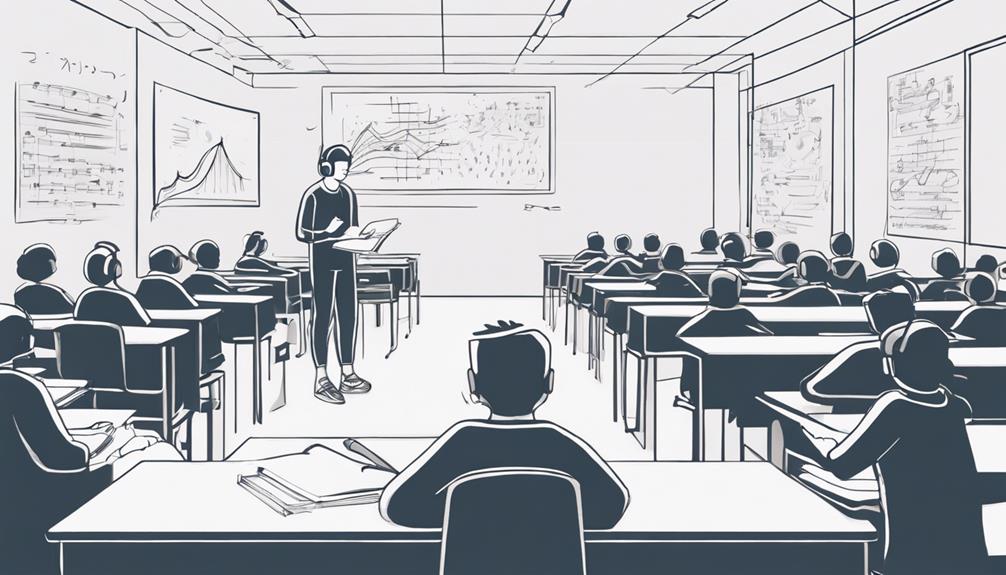
Auditory learning style, characterized by a preference for verbal communication and information absorption through listening, plays a significant role in how individuals acquire and retain knowledge. Auditory learners thrive in environments where they can engage in verbal interactions and auditory stimuli. Here are three key points about the auditory learning style:
- Verbal Communication: Auditory learners excel in situations where information is presented verbally, such as lectures, group discussions, and verbal instructions. They have a strong ability to process and retain spoken information effectively.
- Benefit from Lectures: Auditory learners often find lectures to be an effective way to grasp complex concepts. The verbal delivery of information helps them focus and absorb key points, leading to better understanding and retention.
- Enhanced Recall: This learning style is associated with improved recall of spoken information. Auditory learners can easily remember details from conversations, audio recordings, or verbal instructions, making them adept at tasks that require remembering spoken instructions or discussions.
Kinesthetic Learning Style Explained
Engaging the body and physical senses in the learning process, kinesthetic learning style emphasizes hands-on activities and physical movement for optimal comprehension and memory retention. Kinesthetic learners thrive when actively participating in tasks that involve manipulating objects, conducting experiments, or engaging in simulations rather than passively listening to lectures. This learning style is rooted in the idea that physical experiences enhance understanding and retention of information.
Individuals with a kinesthetic learning preference often excel in environments that allow them to interact with the material through practical experiences. Activities like role-playing, hands-on experiments, and interactive games cater to their learning needs, promoting deeper comprehension and memory recall. By incorporating movement and tactile experiences into education, educators can better cater to the needs of kinesthetic learners and enhance their overall learning outcomes. Understanding and implementing strategies that align with the kinesthetic learning style can significantly benefit those who thrive through active engagement and hands-on experiences.
Tactile Learning Style and Education
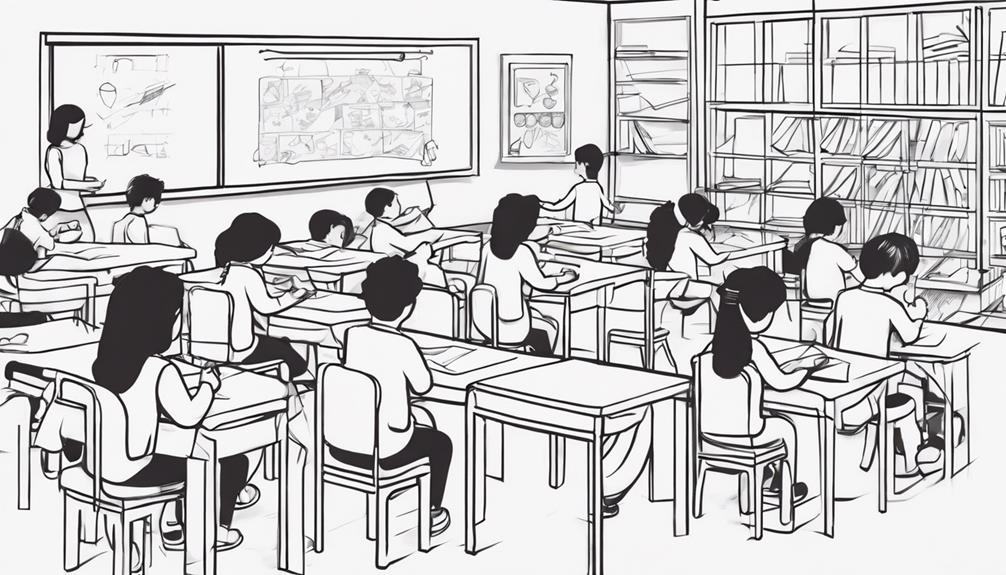
The tactile learning style, closely related to the kinesthetic approach, emphasizes hands-on engagement and physical interaction in the educational process for optimal comprehension and retention of information. Tactile learners, also known as kinesthetic learners, thrive in environments where they can actively manipulate objects and engage in physical activities to understand concepts better. To cater to tactile learners effectively, educators can incorporate the following strategies:
- Hands-On Activities: Providing opportunities for tactile learners to participate in hands-on activities such as building models, conducting experiments, or using manipulatives enhances their learning experience and improves comprehension.
- Interactive Tasks: Engaging tactile learners in interactive tasks that involve physical movement and touch can significantly benefit their understanding of complex ideas and theories.
- Real-World Applications: Connecting lessons to real-world applications allows tactile learners to see the practical relevance of the information they are learning, leading to enhanced retention and application of knowledge in various contexts.
Social Learning Style Influence
Individuals with a social learning style are inclined towards group interactions and collaborative tasks, deriving benefits from sharing ideas and working collectively. This preference for peer engagement fosters communication skills, cooperation, and the development of interpersonal relationships as integral components of the learning process. Social learners thrive in environments that encourage discussions, group projects, and teamwork to enhance their comprehension and retention of information.
Social Learning Impact
The influential nature of the social learning style is underscored by its emphasis on collaborative interactions, fostering an environment conducive to shared knowledge acquisition and skill development. Social learners benefit significantly from this style due to the following reasons:
- Enhanced Communication Skills: Engaging in group discussions and collaborative activities helps individuals with a social learning style hone their communication abilities, including active listening and articulating thoughts effectively.
- Teamwork and Empathy: By participating in peer interactions, social learners develop essential teamwork skills and cultivate empathy towards others' perspectives, leading to a more inclusive and supportive learning environment.
- Knowledge Enrichment: Sharing ideas, experiences, and perspectives with peers not only deepens understanding but also broadens the scope of learning, allowing for a richer and more comprehensive acquisition of knowledge and skills.
Peer Interaction Benefits
Peer interaction benefits in the realm of social learning styles manifest as catalysts for collaborative knowledge exchange and skill enhancement, fostering a dynamic environment conducive to mutual growth and understanding. Social learners excel in group settings where they can actively participate in discussions, share ideas, and learn from their peers. Engaging in group projects, teamwork activities, and cooperative learning environments allows individuals with a social learning style to leverage their interpersonal skills and communication abilities to enhance their learning experience. This emphasis on social connections and interactive learning underscores the significance of peer interactions in shaping the educational journey of social learners. The table below summarizes the key benefits of peer interaction for individuals with a social learning style:
| Peer Interaction Benefits for Social Learners | |
|---|---|
| Promotes collaborative learning | Fosters a dynamic environment conducive to mutual growth |
| Enhances knowledge sharing | Facilitates skill development through interactive exchanges |
| Encourages active participation | Strengthens interpersonal skills and communication abilities |
| Supports cooperative learning environments | Emphasizes the value of social connections in learning |
| Enables learning from and with peers |
Identifying Learners' Styles
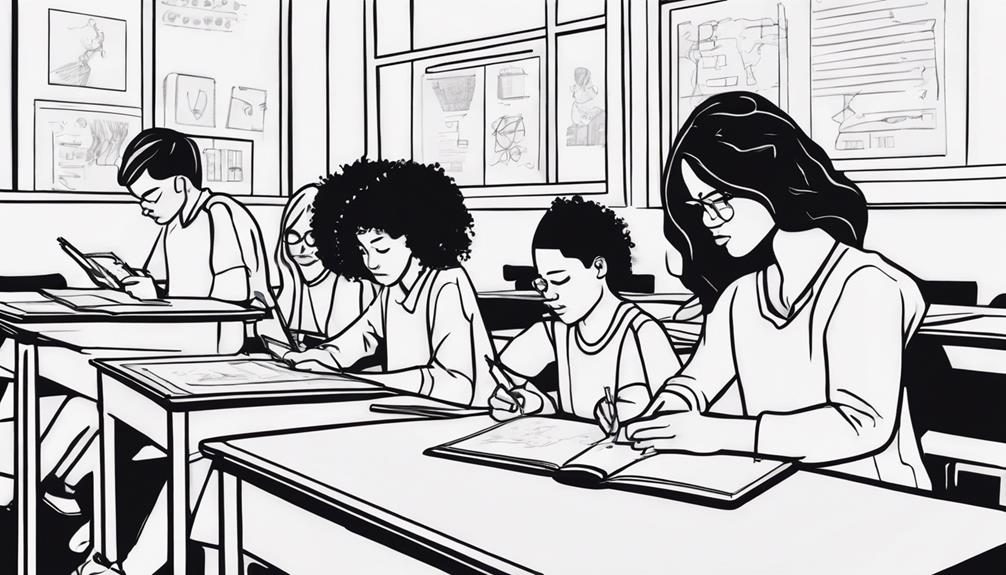
Utilizing surveys, observations, and self-assessments is essential for accurately identifying learners' preferred styles of learning. By employing these methods, educators can gain valuable insights into how students learn best, allowing for the customization of teaching approaches to suit individual needs. Understanding students' learning styles is crucial for adapting teaching methods effectively, as it enhances engagement and comprehension in educational settings. Here are three key points to consider when identifying learners' styles:
- Tailoring Teaching Methods: Once students' learning styles have been identified, educators can tailor their teaching methods to match these preferences. This personalized approach not only improves students' understanding but also fosters a positive learning experience.
- Creating Inclusive Environments: Recognizing diverse preferences among students enables educators to create inclusive environments that cater to a variety of learning styles. This inclusivity promotes a sense of belonging and ensures that all students have equal opportunities to excel.
- Supporting Different Learning Speeds: By offering options for accessing information and completing tasks, educators can support learners with varying speeds and preferences. This flexibility accommodates individual differences and promotes a conducive learning environment for all students.
Training Strategies for Different Styles
Upon understanding learners' preferred styles, it is imperative to strategically design training strategies that cater to visual, auditory, kinesthetic, tactile, and social preferences for optimal educational outcomes. For visual learners, incorporating visual aids such as diagrams and charts can significantly enhance comprehension and retention. Auditory learners benefit from verbal delivery methods like lectures, podcasts, and discussions, which stimulate their auditory senses and aid in knowledge acquisition. Kinesthetic learners, who learn best through hands-on experiences, can thrive with interactive simulations and role-playing activities that engage their physical senses. Tactile learners, on the other hand, require physical engagement, so including tangible objects, textures, and interactive materials in training sessions can boost their engagement and understanding. Lastly, social learners excel in group settings, making collaborative projects, group discussions, and teamwork essential components of their training programs for a more enriching learning experience. By tailoring training strategies to accommodate these diverse learning styles, educators can create more inclusive and effective learning environments.
Tailoring EdApp for Diverse Learners
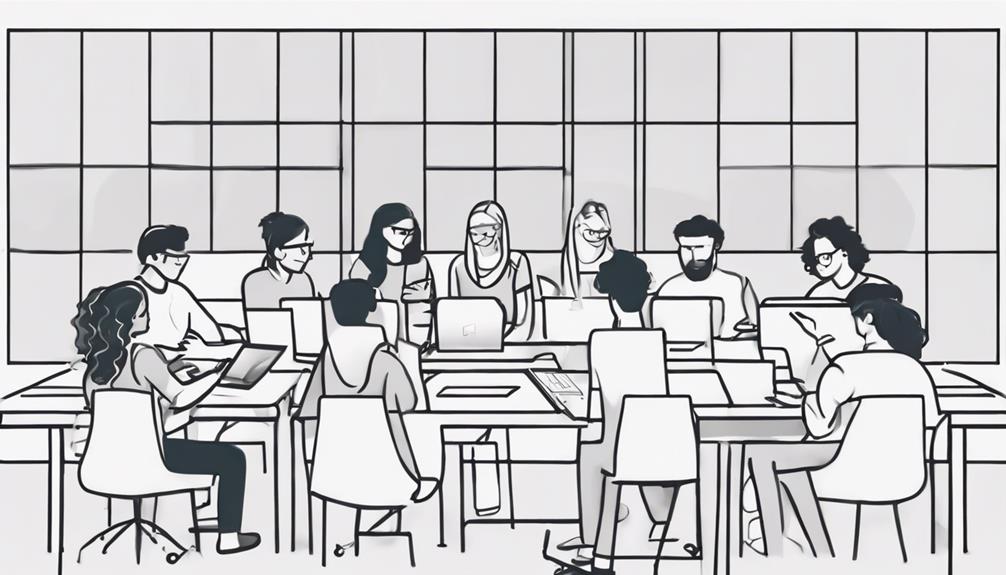
How can EdApp be tailored to effectively accommodate diverse learners' needs and preferences for optimal educational outcomes? EdApp offers personalized learning opportunities through adaptive content delivery, making it a versatile platform for catering to a wide range of learning styles and preferences. To ensure the inclusivity of diverse learners, EdApp incorporates the following strategies:
- Interactive Activities: EdApp provides a variety of interactive activities that cater to different learning styles, including visual, auditory, and kinesthetic learners. By offering engaging exercises such as quizzes, simulations, and games, the platform enhances the learning experience for all types of learners.
- Adaptive Content Delivery: The platform utilizes adaptive content delivery to personalize the learning journey for each individual. By analyzing user behavior and performance, EdApp can tailor the content to suit the specific needs and preferences of diverse learners, ensuring optimal comprehension and retention.
- Positive Learning Environment: EdApp supports a positive learning environment by offering options for accessing information and completing tasks. This flexibility accommodates the diverse learning preferences of users, creating a comfortable and inclusive space for educational growth.
Frequently Asked Questions
How Do Learning Styles Develop in Individuals?
Learning styles develop in individuals through a complex interplay of nature vs. nurture. Genetic predispositions may influence cognitive development, shaping how individuals process information. Environmental factors, such as upbringing, education, and life experiences, further contribute to the formation of learning styles. As individuals interact with their surroundings, their learning preferences and strategies evolve, reflecting a blend of inherent traits and external influences.
Are There Any Cultural Influences on Learning Styles?
Cultural influences significantly impact learning styles, shaping cognitive development and educational practices. Societal norms, traditions, and values contribute to how individuals process information, interact with educational materials, and engage with learning environments. These influences can shape preferences for visual, auditory, kinesthetic, or other learning modalities, reflecting the diversity in how individuals perceive, process, and retain knowledge based on their cultural backgrounds. Understanding these influences is crucial for designing inclusive and effective learning experiences.
Can Learning Styles Change Over Time?
Age-related changes, environmental factors, brain development, and educational experiences can all contribute to the evolution of learning styles over time. As individuals mature, their cognitive processes may alter, leading to shifts in how they absorb and retain information. Furthermore, new surroundings and educational opportunities can shape and refine one's preferred learning methods. Understanding these dynamics is crucial in adapting teaching strategies to accommodate changing learning styles effectively.
Are There Any Drawbacks to Categorizing Learners Into Specific Styles?
When categorizing learners into specific styles, potential drawbacks include overlooking individual preferences, limiting labels that may not capture the full spectrum of learning approaches, and inadvertently stereotyping students. This process can lead to a narrow view of students' strengths and hinder their overall development. It is essential to consider the complexity and variability of learning processes, allowing for flexibility and adaptation in educational approaches to cater to diverse learning needs effectively.
How Can Educators Effectively Accommodate Multiple Learning Styles in a Classroom Setting?
In catering to individual preferences, educators can implement various classroom techniques to accommodate multiple learning styles effectively. By prioritizing student engagement through interactive activities, visual aids, auditory cues, and hands-on experiences, teachers can create a dynamic learning environment. Incorporating diverse teaching strategies such as group work, discussions, and individual projects can further enhance comprehension and retention among students with varying learning preferences.
Conclusion
In conclusion, the diverse spectrum of learning styles can be likened to a multifaceted gem, each facet representing a unique approach to acquiring knowledge. By recognizing and adapting to these differences, educators can unlock the full potential of each learner, creating a rich tapestry of understanding and growth within educational environments. Embracing the complexity of individual learning styles is key to fostering inclusive and effective learning experiences for all.
